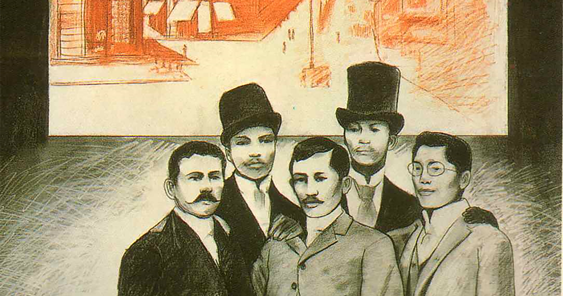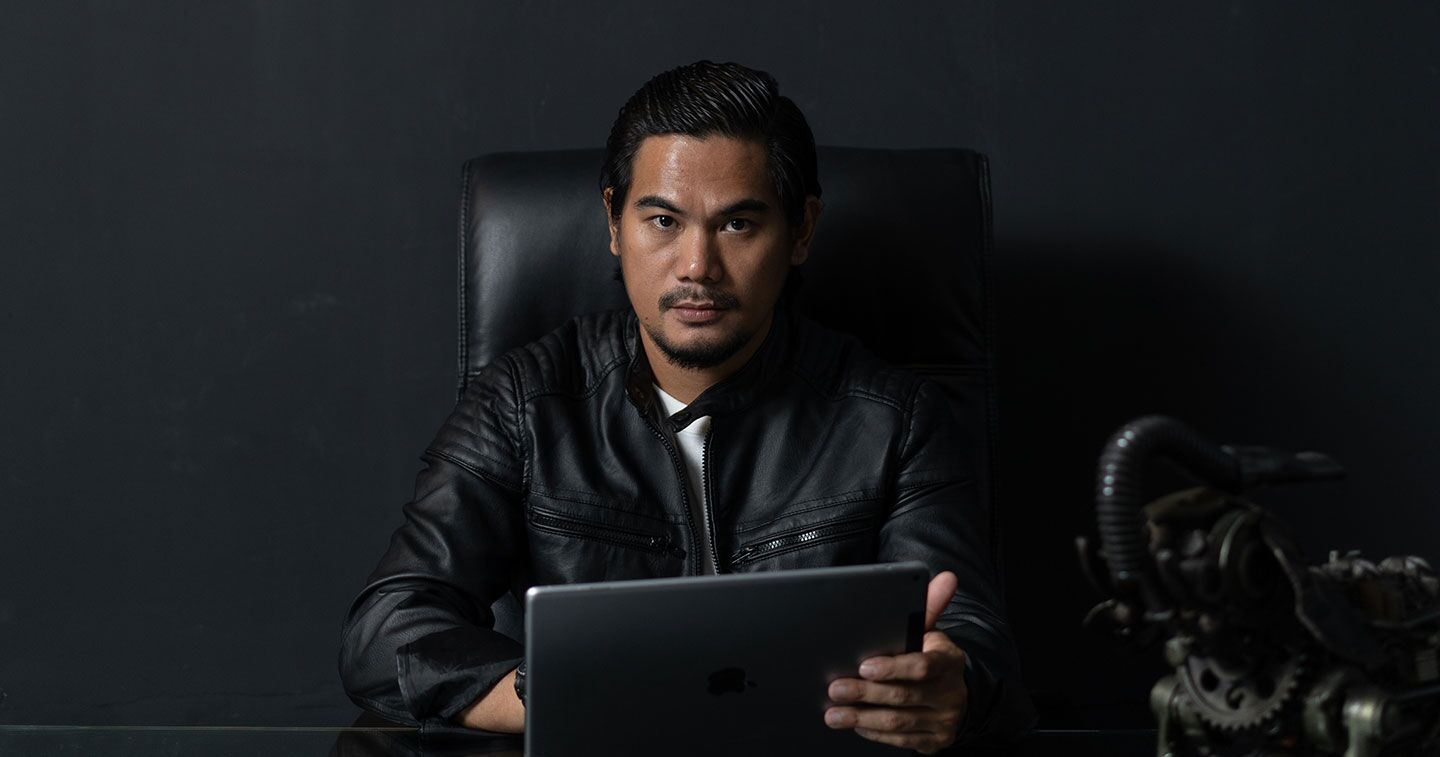Philippine National Artist for Visual Arts Benedicto Cabrera—better known as BenCab— seeks to disrupt fascism with art.
Words by Rome Jorge; Art by Benedicto Cabrera
Once, the very word “filipino” didn’t even refer to the natives of the tropical archipelago; instead they were called by “indio” by the Spanish colonizers, who like other Europeans with their penchant for ignorant generalization, mistook all indigenous people of South and East Asia and even those of the Americas as natives of India. When native-born Filipino expatriate writers in Spain clamored for equality, they subversively called themselves Los Indios Bravos or the “The Indian Braves,” wittily referring to the American Indian “braves” or warriors, as well as the double meaning of “bravos” in Spanish, which can mean either “courageous” or “barbaric.” The forefathers of the Philippine revolution owned for themselves the derogatory labels imposed by their oppressors—indios and bravos—and made them a mark of distinction and pride remembered to this day. It was subtle and sublime—their very name an indictment of their oppressor’s ignorance. One could expect no less from a band of warriors comprised by the likes of novelist and National Hero Jose Rizal and painter Juan Luna. And in their footsteps, Philippine National Artist for Visual Arts Benedicto Cabrera, aka BenCab, continues to tread, no less brave, no less indio, and no less sublime.
At his very own BenCab Museum in Tuba, Benguet, near Baguio, adobo magazine caught up with the globetrotting Cabrera soon after his arrival from England and days before his departure for Canada for an exclusive interview and heartfelt discussion the culture of resistance and the art of struggle.
The Guerrilla
His works are sophisticated and instantly agreeable even to the untrained eye. His brushwork is emphatic and moving, his lines clean and concise. Yet they reveal the most savage condemnations of injustices. He chooses to champion victims of injustices with the most subtle yet stirring of portraits.
There is Flor Contemplacion. In 1995 at the 10th Asian International Art Exhibition, National Museum Art Gallery, Singapore, Cabrera dared hang a huge portrait of the Filipino domestic helper executed by the Singaporean government the year before. Cabrera’s portrait of Contemplacion was dark and foreboding, based only on a photo published on a newspaper. Spanning four by five feet, the painting loomed large and stared directly with shadowed eyes. The Singaporean authorities only realized who the subject was after Cabrera had left the city-state. In a previous interview, Cabrera explained, “It was a guerrilla statement.”
There are the comfort women. In 1999 at Fukuoka, Japan, Cabrera bravely exhibited paintings that portrayed Japanese abuses during the Second World War, including the systematic rape of Filipino women forced into prostitution, euphemistically called by the imperial Japanese military as “comfort women.” His painting “Conquest and Resistance” shows a Filipino girl being led away by a Japanese officer ominously to an unceremonious fate.
There are the overseas Filipino workers. In 1978 at his show “Larawan II: The Filipino Abroad” at The Luz Gallery, he portrayed the disenchantment of expatriates and exiles fleeing the oppression of the Marcos dictatorship and its economic failures.
There are our forefathers and ancestors. He had already begun investigating issues national identity through his art, as evidenced by his 1977 painting “A Question of Identity” that portrays indigenous Filipinos and his painting “Two Filipinas In The Era Of Multinationals” that portrays two Spanish colonial era Filipino women in traditional terno gowns listening to music on headphones and holding McDonald’s hamburger.
Then there is Sabel, the iconic and enigmatic muse Cabrera has portrayed through the decades since 1965 through a variety of means—through social realist portraiture and abstract brush strokes, in oil and canvas and steel sculptures, as a young woman and as a ghostly elder. Sometimes diaphanous and sometimes haunting, Sabel was inspired by a real life scavenger draped in plastic Cabrera witnessed as an art student in Bambang, Tondo, Manila. Even in her most elegant and stylized portrayal, Sabel symbolizes the grim social realities that haunt the Philippines to this day.

Ben Cabrera
Awaken
2011
Acrylic on canvas
Coming home
Like the Los Indios Bravos nearly two centuries before him, Cabrera’s sense of identity has been sharpened by his time far from home. Born to Democrito Cabrera and Isabel Reyes in Malabon, Philippines on April 10, 1942, BenCab resided in London in the 1960s where he married ex-wife Caroline and fathered his eldest child before returning to the Philippines in 1972, only to leave for London again in 1974 to escape tightening grip of martial law declared by the plunderous dictatorship of Ferdinand Marcos. Cabrera documented not only Filipino overseas workers and political exiles but also the nascent punk rock subculture of England.
After the peaceful People Power Revolt of 1986 overthrew the Marcos dictatorship, Cabrera returned to the Philippines to reside, not in his hometown of Metro Manila, but in the mountain city of Baguio. In 1987, he, along with Santiago Bose, Roberto Villanueva, Kidlat Tahimik and other Baguio-based artists established the Baguio Arts Guild (BAG), and advocated peace for the Cordilleras when it was ravaged by counterinsurgency operations. After the 1990 Baguio earthquake, he and other members of the BAG initiated Art Aid as a therapy for traumatized youths, and Artquake as a fundraising art auction. Cabrera’s “Aftermath” exhibit at the Chuck Levithan Gallery in Soho documented the ordeal.
His adherence to both truth and subtlety has since been richly rewarded. In 2006, he was conferred National Artist of the Philippines for Visual Arts. In 2009, he opened the BenCab Museum, which quickly became the mountain city’s most important art destination. In 2015, Cabrera’s 50 years as an artist was celebrated year-round with exhibits of his works at all of the most important art museums and galleries of the Philippines as well as with a musicale titled “Sabel.” Yet Cabrera has always been insurgent, even when he became the establishment.
Still fighting
Now, in the post-truth era of resurgent fascism and brazen historical revisionism, Cabrera continues to resist in the most sublime ways. “I am always affected by social conditions and disquietude which trigger my emotions. The current political situation drove me to create a large, three-dimensional artwork which was exhibited in this year’s Art Fair,” he confides, referring to the 2017 Art Fair where the Secret Fresh Gallery had a hidden room exhibiting Cabrera’s work “Heads.” At first glance a gaily colored artwork, “Heads” reveals itself as a wall strewn of what seems to be death masks evocative of the over 8,000 extrajudicial killings perpetrated under the current Duterte regime.
“With this new Duterte regime, I tried to portray the killing with impunity. I feel that the main issue really is human rights. So my work really borders on that,” he explains.
“I used to work for a magazine also and I’m exposed to journalism and that exposure helps me express it in my paintings,” he says, referring to his work as layout artist for The Manila Times’ Sunday magazine in 1965.
He recently participated in “Karapatan: Artists Stand for Human Rights” at the Jorge B. Vargas Museum along with dozens of other artists. “As the exhibition had a human rights theme, I agreed to be part of an exhibition of large drawings that is currently on in the Vargas Museum. The title of my drawing is ‘Crisis in Humanity,’” he explains.
“My art is my statement.”








